The News-Hub/ Articles
Back to Articles
Recommended Articles
What is Slow Fashion and Why Does it Matter?
There is no denying that most of us love fashion for the way it can instantly boost our confidence and make us feel good. After all, what’s the harm in treating yourself every now and then to a new item of clothing to brighten up your outfits?
With the fashion industry constantly producing new trends each season, keeping up with the latest fashions can at times be a challenge. However, have you ever stopped to consider the real cost of your shopping habits, not only to your bank account, but also the detrimental effect it could be having on the environment?
According to the latest Family Spending report from the Office of National Statistics, the average person in the UK spends at least £526.50 per year on buying brand new clothes. It doesn’t take much to imagine the sheer magnitude of just how many items of clothing we accumulate each year to our ever-growing wardrobes and the question is, do we really need so much?
So, how can we enjoy fashion and yet be responsible at the same time? Thankfully, there is a more sustainable way we could be shopping for our clothes and it comes by applying the principles of “slow fashion.”

Photo by S O C I A L . C U T on Unsplash
What Does Slow Fashion Mean?
Slow fashion is the practice of buying fewer items of clothing that are made from quality natural fabrics, made to last longer. These garments are often produced in smaller batches and feature a collection of classic, timeless styles that won’t go out of fashion so soon.
The materials used in slow fashion to produce environmentally friendly clothing often include natural organic fibres, sourced from plants and trees. These items are then recycled, repurposed or upcycled and contain natural dyes and less harmful chemicals.
Organic cotton is one of the most natural fabrics because it comes from a plant and is a popular choice due to its longevity and durable nature since it is strong and easy to wash. It is also much better for the environment, since it doesn’t require the need for chemicals to break down into cellulose before being turned into fibre.

Viscose on the other hand is another natural material that comes from beech trees and bamboo plants. The leaves are then mixed with sodium hydroxide and carbon disulfide needed to turn wood and grass chips to fabric. These chemicals can become toxic and possibly harmful since they can be absorbed by your skin, especially if the material is of a low quality. In addition, millions of trees are lost each year to make viscose, resulting in deforestation and damage to many natural habitats for wildlife.
The most popular materials used for fast fashion clothing is polyester, often cheaply made to a low quality. Polyester is not only an uncomfortable fabric to wear since it doesn’t allow our skin to breathe as easily and naturally as cotton, it also takes much longer to decompose compared to natural fibre and is one of the main causes of microplastic particles found washed up in the ecosystem.
Natural fabrics on the other hand are renewable and easier to dispose of, resulting in less damage to the environment. However, the process of making clothing from natural fibre is often a long, labour-intensive procedure, sometimes requiring clothes to be made from hand. According to Libel and Roy, by replacing mass production of cheap clothing for handmade textile craft, this would cultivate a more sustainable approach to fashion. It would also provide employment and a livelihood to a large number of people living in deprived countries and help alleviate poverty.
How Can I Practice Slow Fashion?
We all like to have choices, especially when it comes to what we wear, but an evolving wardrobe doesn’t necessarily mean having to continuously keep buying new clothes. The real trick to practising slow fashion comes down to consumer buying behaviour and honestly asking yourself: do you really need to purchase that item?
Research from Barnardo's reported that one in three women feel their clothes are outdated after less than three wears and, more alarmingly, an estimated £30 billion worth of clothes purchased have never even been worn, according to Wrap clothing.
One of the best ways to practice slow fashion is to avoid impulsive purchases of the latest trends and to instead opt for quality pieces that you can wear time and time again.
Another practice is to choose colours you know will suit and complement your shape. Purchasing durable fabrics will also mean you will save money in the long-term since you won’t need to replace your clothes as often.
Upcycling is another way you can give your old garments a new lease of life and to create your own unique style with a few simple textile alterations and repairs.

Donating your unwanted items to a charity store also means not only would you be supporting a worthy cause, but you’ll also be preventing more clothes from ending up in a landfill. Maybe each time you buy a new item, make a habit to substitute something from your wardrobe.
Another way you can reduce your consumer spending and avoid buying items that will only sit in the wardrobe after an event is to rent clothing, especially if it's for a one-off occasion where you need formal attire, for say a prom dress for example. Each of these practices can help us to shop with a clear conscience.

Changing Consumer Mindsets
One good thing to come out of the global pandemic, from an environmental perspective, is that many retailers reported a 25% fall in clothes sales in 2020. According to The Office For National Statistics, this was the biggest drop in 23 years since records began. This was likely due to the closure of high street stores and people being told to stay at home. In addition, with all entertainment and leisure venues also closed, this presented fewer opportunities for people to socialise and the need for purchasing new clothes became less important.
The pandemic also created significant economic concerns, forcing many businesses to reduce their workforce and decrease staff wages, and has shifted people's priorities when it comes to their consumer spending. This period has also presented us with an opportunity to slow down and rethink our lifestyles. Many people found solace in nature and developed a deeper appreciation for the wider environment we live in.
Luxiders Magazine said there has been a major shift towards simplicity and minimalism as a lifestyle and a fall in a materialistic mindset. Furthermore, a research survey by McKinsey & Company revealed “57% of shoppers agreed that they had made significant changes to their lifestyles to lessen their environmental impact.” The study also found that 64% of shoppers decreased their spending on clothing and footwear during the pandemic. Will conscientious shoppers keep pushing brands to produce more eco-friendly and responsible clothing in 2021?
Perhaps the saying is true that less is more and this definitely applies to fashion.

What is Fast Fashion and Why is it Bad?
Fast fashion is the practice of producing and selling cheap clothing made from low quality materials to meet the ever-changing demands of the latest seasonal fashion trends.
Fibre2Fashion discusses the difference between slow fashion vs fast fashion. Fast fashion are low-quality machine-made garments that have been mass-produced, sold at a low price and very quickly often end up in landfills to slowly degrade and release greenhouse gases. Slow fashion, on the other hand, are garments that have been made by hand, requiring more time to produce. They are made to a higher quality, using sustainable fabrics that can be re-washed over several years, and are sold at a higher price. The selection is made by opting for materials with less chemicals, dyes, energy, less resources, less waste and minimal impact.
Libby Peake of the Green Alliance says the UK is one of the worst culprits when it comes to fast fashion and adds that UK consumers buy twice the amount of clothes compared to other European countries. It isn’t just the impact on the environment to consider when it comes to fast fashion but also the ethics behind the people who are actually making your clothes. Have you ever stopped to wonder why some items of clothing are sold more cheaply at some stores than others?
One of the main reasons for this is because some stores are still outsourcing to a low paid labour force in developing countries where regulations around pollution are often less strict in the countries of manufacture, says Dr Patsy Perry, a co-author of the research from Manchester University. Workers are paid as little as £3 an hour, in terrible conditions to produce items of clothing but fashion brands will add a high mark-up price. According to a report conducted by Oxfam, the organisation estimates that just 4% of the price of a piece of clothing makes it back to the pockets of workers. Therefore, when we pay £10 for a t-shirt, the worker receives just 40 pence in return.

Photo by Daniel von Appen on Unsplash
Fast fashion items often undergo a long and intense chemical process with around 8,000 different synthetic chemicals used to dye and bleach garments, all of which is extremely harmful to our skin and overall health.
Dr Perry further adds, “The waste water is going out into freshwater streams and polluting the rivers that people are fishing from [and] living from” within these deprived communities.
Brands that follow sustainable practices adhere to ethical and humane working conditions, fairer pay and often include certification labels on garments such as Fair Wear Foundation, Fair Trade Certified, Ethical Trading Initiative or Certified B Corporation.
“Slow fashion is the only sustainable future for the industry and the planet,” says Libby Peake of the Green Alliance.
Is Sustainable Fashion a Trend?
During the Second World War, with resources in short supply and money scarce, many people adhered to the mantra of “Make-do-and-mend”, with many weekly magazines supplying guides on how to sew, make garments, or upcycle using limited textile materials found in the home. Thankfully, this trend is beginning to resurface following an upsurge for sustainable fashion.
People want to enjoy fashion but without feeling bad about the negative consequences surrounding how the items were produced. Therefore, there has been a shift towards the “slow fashion movement” and shopping for ethical clothing and sustainable fashion.

Photo by Alyssa Strohmann on Unsplash
For example, Livia Firth, founder of Eco Age, started a campaign called #30Wears to encourage people to only buy items they know they will wear at least 30 times. Eco Age reported an increasing demand for second-hand fashion with charity retail sales soaring an average of 4.4% year on year. And fashion apps like Depop and Vinted have also given a boost to buying and selling second-hand clothing.
Trends for vintage clothing has increased popularity for thrift stores, meaning you still get to wear the brands you love but without the hefty price tag and it comes with the knowledge you are making a considered choice towards sustainable fashion.
Among other sustainable trends, Piñatex is an alternative to using leather by using the leaves from pineapples. The long fibres from the pineapple leaves are extracted, then processed to form a non-woven mesh that ultimately forms the basis of the final textile and no harm comes to any animals.
To find out more about the “Slow Movement” lifestyle”, visit Slow fashion 101.

Photo by Shanna Camilleri on Unsplash
How Much Waste Does Fast Fashion Produce?
When it comes to pollution, the fast fashion industry is one of the largest contributors in the world, encouraging over-consumption and generating excessive waste.
The Intergovernmental Panel on Climate Change (IPCC) has calculated the fashion industry produces 10% of global carbon dioxide emissions every year. There’s also the packaging involved which is not often recyclable, the distribution from the warehouse, the delivery and postage of the item and the fossil fuels involved to transport the items for store or home delivery, all of which comes at a price and at great expense to the environment.
According to Fox Collective, it is estimated that EU consumers dump 5.8m tons of textiles into landfill each year. The Pretty Planteer adds that the average consumer throws away 70 pounds (31.75 kilograms) of clothing per year. Globally we produce 13 million tons of textile waste each year, 95% of which could be reused or recycled.
A report by Global Fashion Agenda & Boston Consulting Group, Pulse of the Fashion Industry, estimates that if we don’t adopt sustainable practices, by 2030 global apparel consumption is projected to rise by 63%, from 62 million tons today to 102 million tons.
It is time we recognised the impact our buying behaviours are having on the planet and make a personal decision as to whether we want to be the cause or the solution the world needs as we move towards a more sustainable lifestyle.

Photo by Francois Le Nguyen on Unsplash
Where Can I Buy Slow Fashion?
Creating a sustainable wardrobe is much simpler than you may think but it starts with knowing where to shop. If you are interested in making the shift towards slow fashion, there are plenty of sustainable clothing brands and slow fashion stores available.
People Tree brand is a Fair Trade pioneer producing sustainable women’s fashion that is both stylish and affordable, whilst at the same time protecting the planet. Thought Clothing is another example of an affordable slow fashion brand, creating contemporary sustainable fashion from a range of fabrics like bamboo, hemp and organic cotton.
Even high street stores such as H&M’s Conscious range have taken a step towards offering sustainable fashion.

Photo by Hannah Morgan on Unsplash
Here is a list of 35 Ethical & Sustainable clothing brands that oppose fast fashion practices.
With more brands offering stylish sustainable clothing, you no longer have to compromise your fashion but can still look good whilst protecting the planet at the same time.
To find out more on how to live a more sustainable lifestyle, read our article on a Beginner's Guide to Plastic-Free Living.
Do you know of any other sustainable fashion brands you could recommend to the Purple Turtle Community? Or perhaps you are interested in starting your own eco-friendly fashion business. If so, tell us about it in the comments section below.
Empty content. Please select category to preview

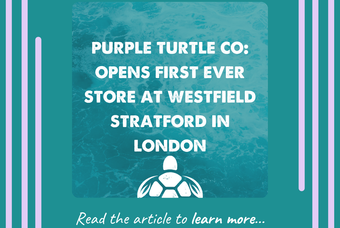


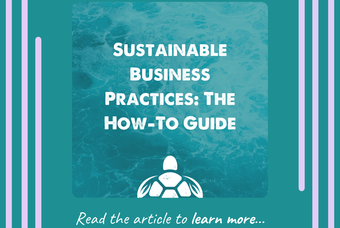

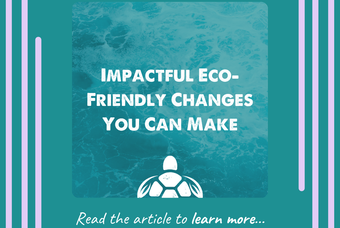
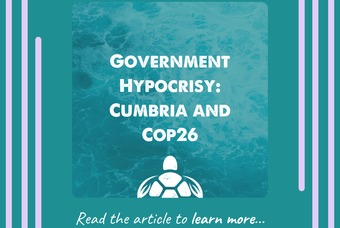
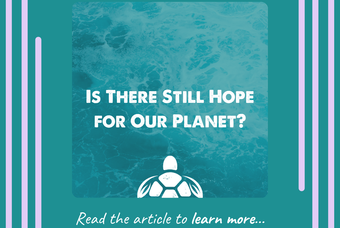
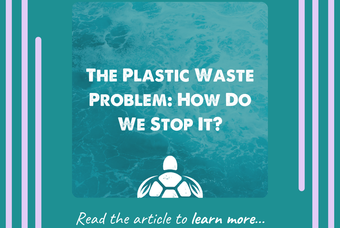

0 comments. Write a comment